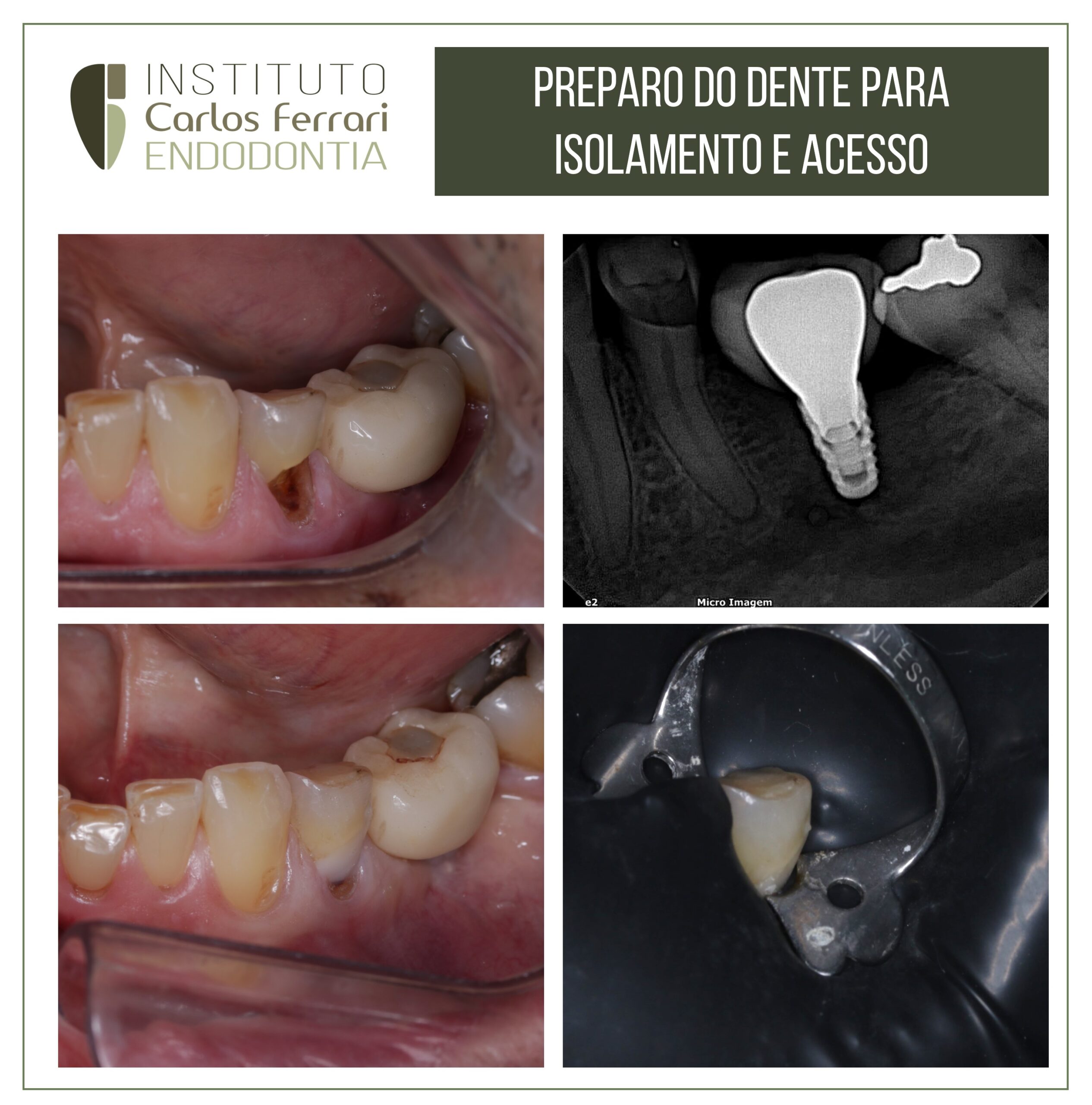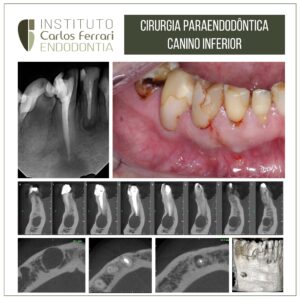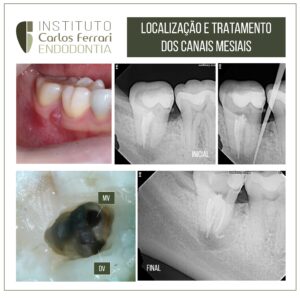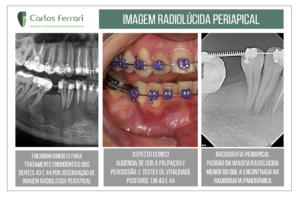Manobra simples de reconstrução da parede vestibular radicular para possibilitar o isolamento absoluto e a cirurgia de acesso.
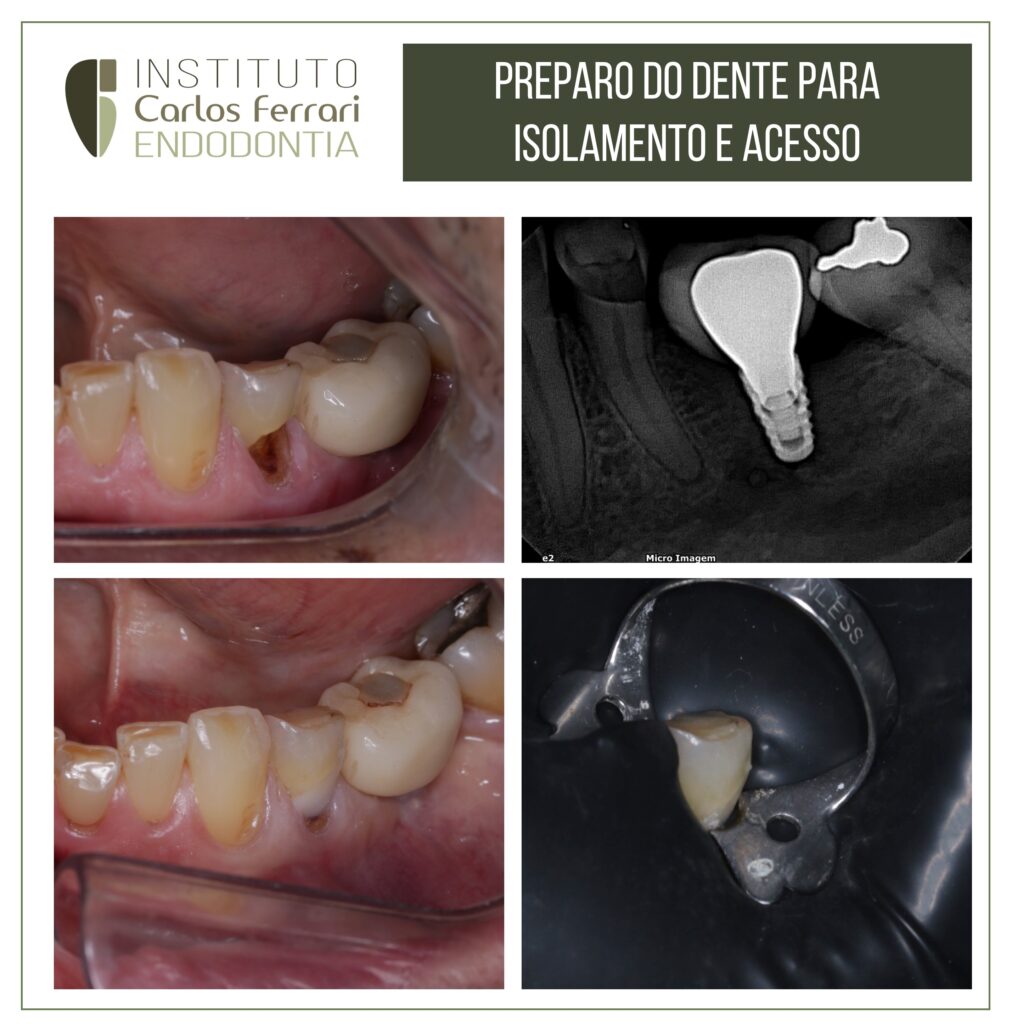
Isolamento absoluto in:
Introdução
Em 2000, a Federação Dentária Internacional (FDI) propôs o conceito de intervenção minimamente invasiva no tratamento da cárie. Desde então, o tratamento da cárie em dentes posteriores abrangeu o uso de resina composta direta. Contudo, a umidade
do meio oral dificulta a adesão ao dente e entre as camadas de resina. Além disso, a contaminação da superfície por sangue também pode inibir união com a estrutura dentária. Devido a isso, é sugerido o uso de métodos para controlar a saliva durante o
procedimento restaurador e uma das medidas mais eficazes é o Isolamento Absoluto (IA). No IA para restaurações tipo classe I, II, III, IV ou V, é necessário expor simultaneamente os dentes adjacentes para se conseguir recuperar o ponto de contato, já a utilização do IA em Tratamento Endodôntico (TE), apenas o dente a ser tratado é exposto.
Um das principais preocupações dos cirurgiões-dentistas e pacientes é em relação a longevidades dos tratamentos odontológicos. O IA foi introduzido em 1864 na cidade de Nova York por Sanford C. Barnum, e desde então tem sido utilizado em procedimentos odontológicos, sendo um dos meios mais efetivos no controle de salivação, controle de infecção e proteção do paciente. Essa estratégia também proporciona uma melhor visibilidade da região e condições ideias para o manuseio de materiais e instrumentais.
O uso do Dique de Borracha (DB) durante procedimentos de TE é considerado o padrão essencial por diversos profissionais, incluindo a Associação Americana de Endodontistas.14,15 Isto é devido à sua função como uma barreira para prevenir patógenos orais de entrar no dente acessado e prevenção da inalação de instrumentos e soluções irrigadoras, levando em consideração que a
Odontologia é uma profissão clínica que está associada com riscos biológicos, químicos e físicos. Casos de deglutição ou aspiração de instrumentos no trato gastrointestinal ou pulmão durante o tratamento TE já foram relatados. Esses acidentes podem ser evitados pelo o uso do isolamento com dique de borracha.
Isolamento absoluto


